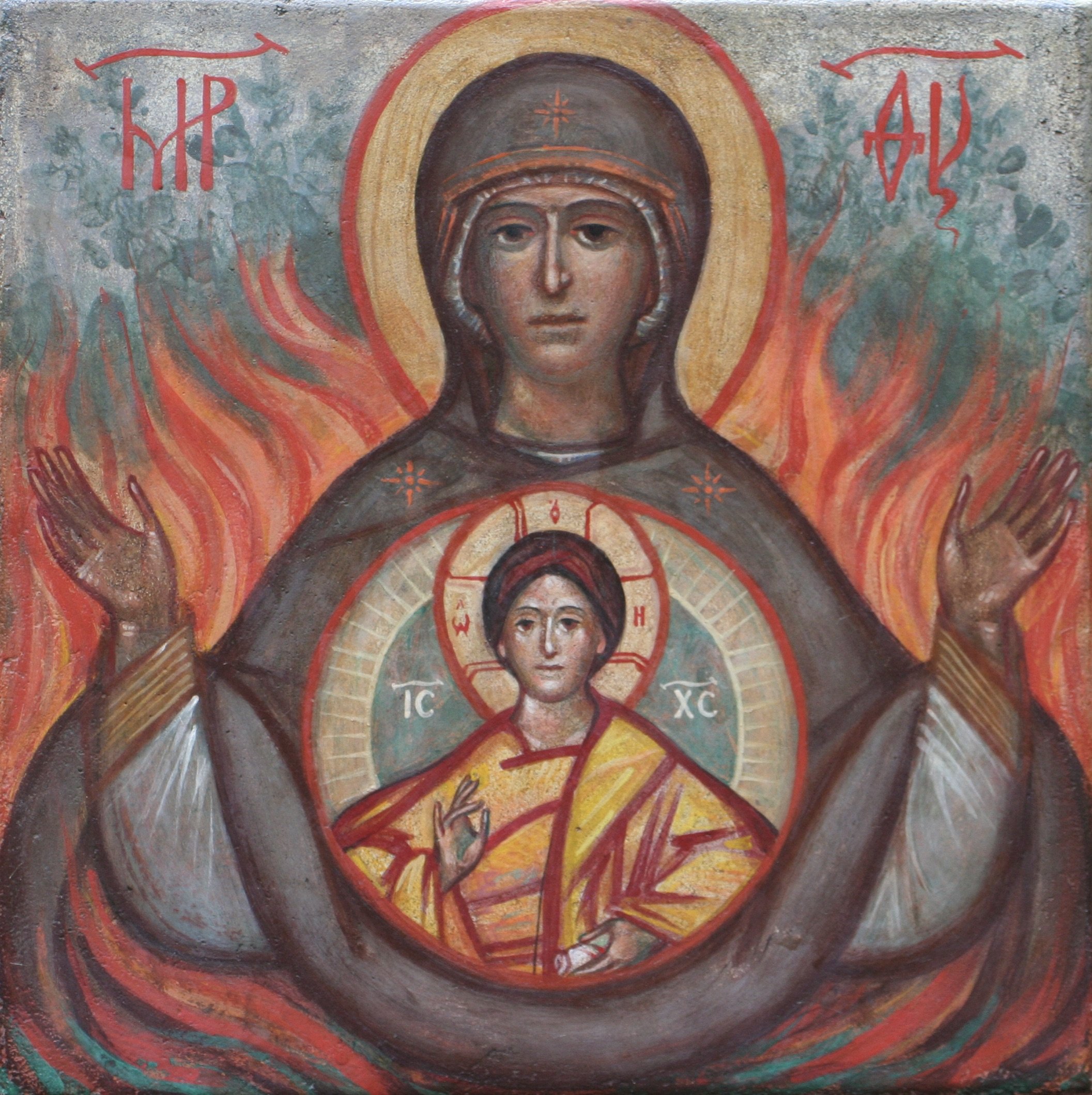There are different ways of portraying the truths contained in the Bible. One, of course, is to illustrate literally a particular event described, as in this painting by Rubens which is the gathering of manna by the Israelites in the desert.
Rubens: Israelites Collecting Manna
Historians stress that in the past, sacred art was a traditional way of transmitting the truths of the bible to the illiterate. This is true, although in practice it would be very difficult to know what was happening even in Rubens painting without being given an explanation of what we are looking at as well. Once we are told the story it is illustrating that the art can help powerfully to enrich our grasp of that story by enlivening our imagination and, through its beauty, opening our hearts to want to learn the truths it portrays. Further, each time we look at this painting all that we have been told about it comes back to us in an instant. It is a powerful aide memoir in this respect, rather a device that transmits a story in isolation.
There is another way of portraying a biblical scene in art. One that allows us not only to remember what happened, but also gives us a deeper understanding of the meaning of what is being described. Artists do this by inserting other events and people, from different times and places, into the scene so that in the single moment of looking we connect them together in the painting. In many ways visual art can make such connections more powerfully than a written commentary. When we see two events connected in this way and reflect upon why, then if the artist has done his job well, we then understand the meaning of both more clearly.
Take for example this painting of Moses seeing the Burning Bush. In Exodus, chapter 3, we are told that God spoke to Moses in the desert from a bush that was burning, but which was paradoxically unconsumed by the flame. God told Moses who he was: ‘I am the God thy father worshipped, the God of Abraham, and Isaac, and Jacob. And Moses hid his face; he dared not look on the open sight of God.(Ex.3: 6). Moses was then instructed to take off his shoes because he was standing on holy ground. Then God told Moses his mission to lead the Isrealites out of Egypt.
In commenting on this event St Gregory of Nyssa wrote in the 4th century AD: “What was prefigured at that time in the flame of the bush was openly manifested in the mystery of the Virgin, once an interval of time had passed. Just as on the mountain the bush burned but was not consumed, so also the Virgin gave birth to the light and was not corrupted. Nor should you consider the comparison to the bush to be embarrassing, for it prefigures the God-bearing body of the Virgin.” (St. Gregory of Nyssa, On the Birth of Christ, PG 46.1133.)
The image shown here is by a contemporary iconographer called Seraphim O’Keefe. It is a fresco, a wall painting in a church in South Carolina. The connection with the Mother of God is made explicit in this painting by showing her in the burning bush (others referred to as the ‘unburnt bush’. Her Son, Jesus Christ, is shown in her womb. The four letter abbreviation IC XC are the first and last letters of each name Jesus Christ, in the Greek. The letters next to Mary are a similar abbreviation for the Greek words that mean Mother of God. We also see Moses taking his shoes off, and being handed the ten commandments by God from a portrayal of heaven as a place with a dark interior, indicating a mystery beyond our full comprehension. Both of these events occurred at different times, but the way the artist has painted them connects in our minds the historical event of the burning bush with Word of God (who is the Son) and with His mother.
It reinforces the general point that Christ is at the centre of history. The Old Testament directs us to Him in the future, the New Testament speaks of His life, and together they can be interpreted so as to provide a template for our present and future pilgrimage to heaven. Each of us has a personal story to tell of our Christian journey, which is a personal and unique participation in this grand story of all mankind.
In regard to this latter point, the image of Our Lady portrays her uniqueness in being the God Bearer, (‘Theotokos’ in Greek). On the other hand the unburning fire in Mary is the fire of Pentecost by which the Church was established and which is the divine life which is the gift of the Holy Spirit to all who are baptized into the Church.
This is ‘Salvation History’ - that narrative of the ark of time from the deepest past and which is given meaning by the Incarnation, life, death and Resurrection of Christ, and directs us to the furthest point in the future again under His divine governance.
Below is an icon of the burning bush also by Seraphim O'Keefe.





